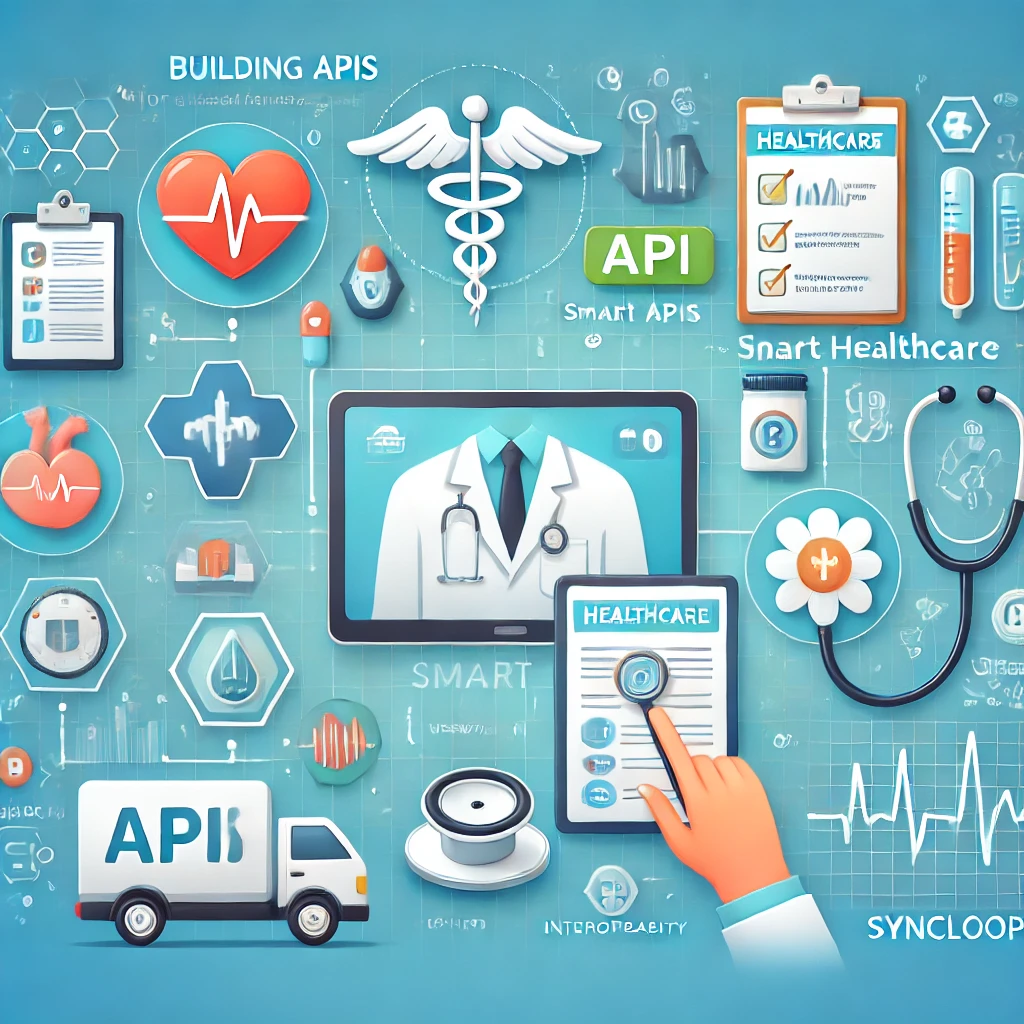Building APIs for Smart Healthcare Applications Using Syncloop

Syncloop offers powerful tools to design APIs that drive innovation in smart healthcare. With features like workflow automation, real-time monitoring, and enhanced security, Syncloop ensures that APIs meet the demands of healthcare applications. This blog explores how to build APIs for smart healthcare using Syncloop and provides best practices for creating secure, scalable, and efficient solutions.
The Role of APIs in Smart Healthcare
APIs enable:
- Patient Monitoring: Integrating wearable devices and IoT sensors to collect real-time health data.
- Telemedicine: Supporting video consultations, appointment scheduling, and remote diagnostics.
- Health Records Management: Enabling seamless access and updates to electronic health records (EHRs).
- Interoperability: Connecting disparate systems, such as hospital management software and insurance platforms.
- Data Analytics: Powering AI-driven insights for predictive healthcare and treatment optimization.
Challenges in Developing Healthcare APIs
- Data Security and Privacy Protecting sensitive patient information while adhering to standards like HIPAA and GDPR.
- Integration Complexity Ensuring compatibility with various devices, platforms, and healthcare systems.
- Real-Time Requirements Delivering instant updates and alerts for critical healthcare scenarios.
- Scalability Handling increasing data volumes as healthcare applications grow.
- Regulatory Compliance Meeting stringent legal and industry requirements for healthcare data.
How Syncloop Simplifies API Development for Healthcare
Syncloop offers features tailored for healthcare API challenges:
- Enhanced Security Protect sensitive data with encryption, authentication, and role-based access control.
- Workflow Automation Automate routine healthcare tasks like appointment reminders and patient monitoring alerts.
- Real-Time Monitoring Track API performance, data flows, and system status for immediate issue resolution.
- Integration Support Connect seamlessly with IoT devices, EHR systems, and third-party applications.
- Scalability Tools Handle growing data volumes and user bases effortlessly.
- Compliance Features Maintain audit logs and reporting mechanisms to meet regulatory requirements.
Steps to Build Healthcare APIs with Syncloop
Step 1: Identify Use Cases
Define the core functionalities of your healthcare API, such as:
- Patient Monitoring: Real-time data collection from wearable devices.
- EHR Access: Securely retrieve and update electronic health records.
- Telemedicine: Enable appointment scheduling, video calls, and prescriptions.
- Alerts and Notifications: Send automated reminders and emergency alerts.
Step 2: Design API Endpoints
Use Syncloop to create modular and scalable endpoints, such as:
- /patient/data: Collect and store patient health data from devices.
- /ehr/access: Retrieve patient medical history securely.
- /alerts/notify: Trigger alerts for critical health events.
- /telemedicine/schedule: Manage virtual appointments.
Step 3: Enable Real-Time Features
Enhance API responsiveness by:
- Using WebSockets or MQTT for low-latency data communication.
- Setting up real-time monitoring for critical workflows.
- Automating alerts for anomalies or threshold breaches in health data.
Step 4: Implement Security and Compliance
Leverage Syncloop’s security tools to:
- Encrypt data in transit and at rest using advanced encryption standards.
- Authenticate API calls with token-based mechanisms like OAuth.
- Maintain audit trails and logs for regulatory compliance.
Step 5: Integrate with Third-Party Systems
Ensure interoperability by:
- Connecting APIs to existing EHR systems, medical devices, and insurance platforms.
- Normalizing data formats to ensure compatibility.
- Providing webhooks for real-time data updates and integrations.
Step 6: Monitor and Optimize
Use Syncloop’s monitoring tools to:
- Track API performance metrics like response times and error rates.
- Identify and resolve bottlenecks or issues proactively.
- Optimize workflows based on usage patterns and analytics.
Best Practices for Healthcare API Development
- Prioritize Security Protect sensitive patient data with robust encryption and authentication mechanisms.
- Design for Interoperability Use standardized data formats like HL7 and FHIR for seamless system integration.
- Ensure Scalability Build APIs that can handle growing data volumes and user demands.
- Focus on Compliance Adhere to healthcare regulations like HIPAA, GDPR, or equivalent standards.
- Document APIs Thoroughly Provide clear and comprehensive documentation for developers and integrators.
Example Use Case: Remote Patient Monitoring System
A remote patient monitoring system uses Syncloop to:
- Data Integration: Collect data from wearable devices like heart rate monitors and glucose trackers.
- Real-Time Alerts: Notify doctors of abnormal readings immediately.
- EHR Updates: Sync patient data with electronic health records securely.
- Scalability: Handle data from thousands of patients simultaneously during peak usage.
- Compliance: Ensure all data handling meets HIPAA standards.
Benefits of Using Syncloop for Healthcare APIs
- Improved Patient Care: Enable real-time monitoring and faster responses to critical health events.
- Streamlined Operations: Automate routine tasks to reduce administrative overhead.
- Enhanced Security: Protect sensitive patient data and ensure regulatory compliance.
- Better Scalability: Support growing healthcare applications and user bases effortlessly.
- Actionable Insights: Enable data-driven decisions with AI-powered analytics and dashboards.
The Future of Healthcare APIs
As the healthcare industry continues to embrace digital transformation, APIs will play a pivotal role in delivering smarter, more connected solutions. Syncloop provides developers with the tools to build scalable, secure, and efficient APIs, empowering the next generation of healthcare innovation.
Image Description
A conceptual illustration showcasing Syncloop’s tools for building APIs for smart healthcare applications, featuring IoT device integration, real-time monitoring, and workflow automation. The image highlights connected medical devices and healthcare platforms.
Back to Blogs